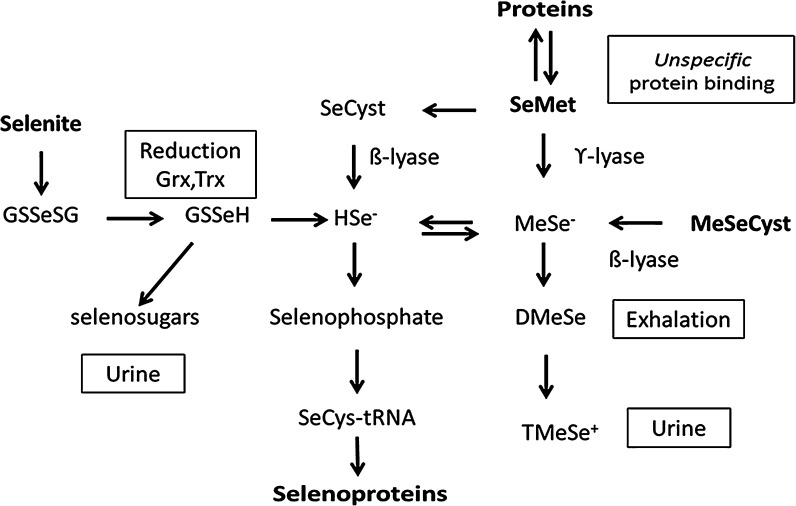Fig. 1.
Biotransformation of selenite and seleno-amino acids to selenide, selenoproteins and excretable metabolites. The reduction of selenite is facilitated by GSH, glutaredoxins, glutathione reductase and/or thioredoxin (Trx) and TrxR. It consumes reducing equivalents, NADPH. Selenate that is transported into cells by an anion transport mechanism (Jager et al. 2016), is also reduced to selenide, but the intracellular reduction of selenate to selenite is less efficient and not fully understood. Hydrogen selenide (HSe−) and methyl selenide (MeSe−) react with oxygen and thiols and complete the redox-cycle. Selenium can be incorporated specifically into selenoproteins via pathways from selenide and the synthesis of selenophosphate. Selenomethioneine can be converted to MeSe− or to selenocysteine via the transsulfuration pathway or unspecifically replace its sulfur analogue in proteins. Among excretory metabolites are selenosugars and at high doses dimethylselenide and trimethyl selenonium ion (TMSe+) (Alexander 2014)

